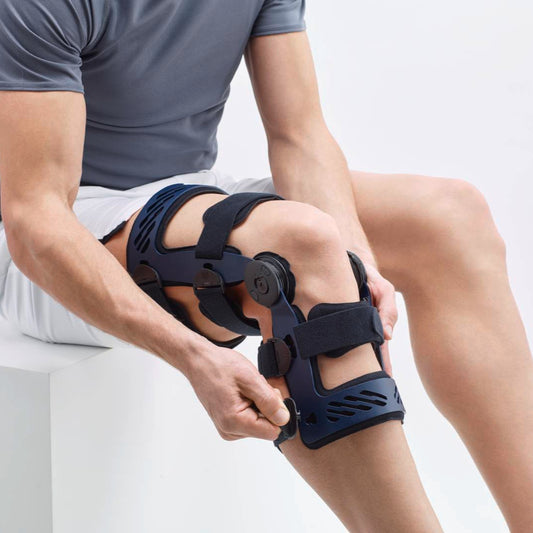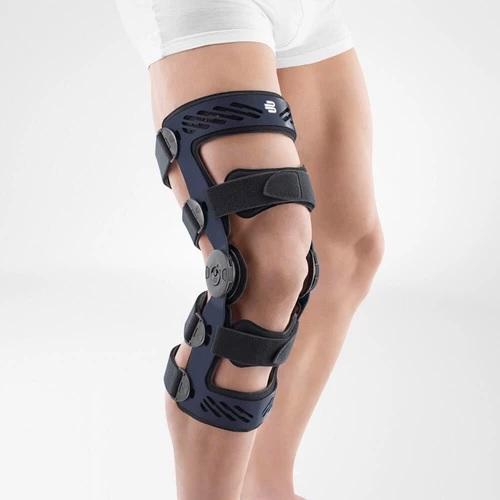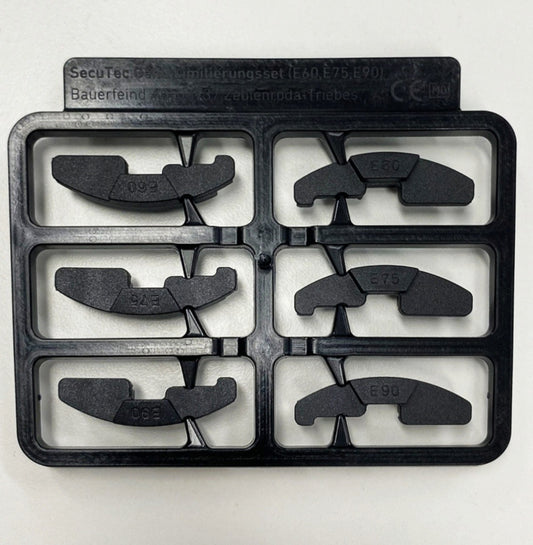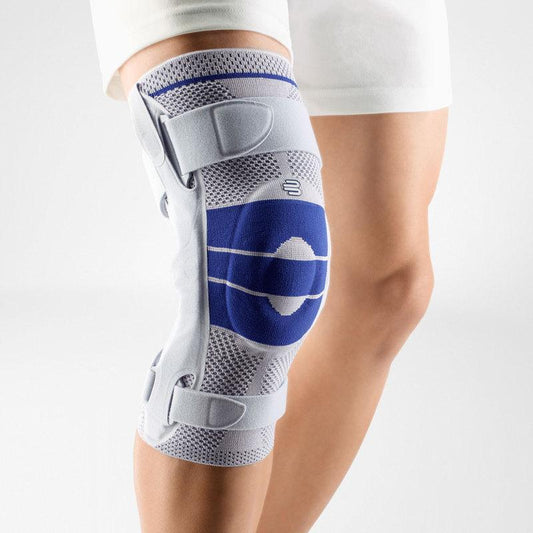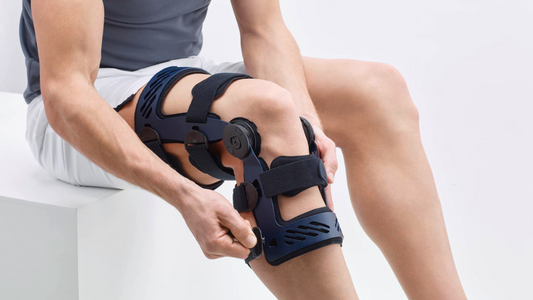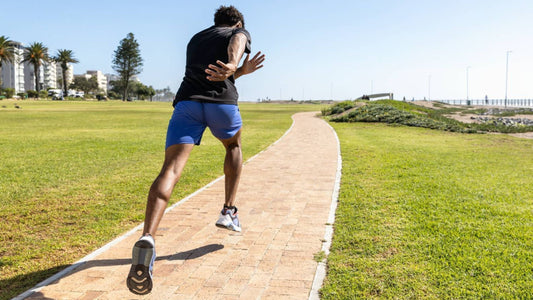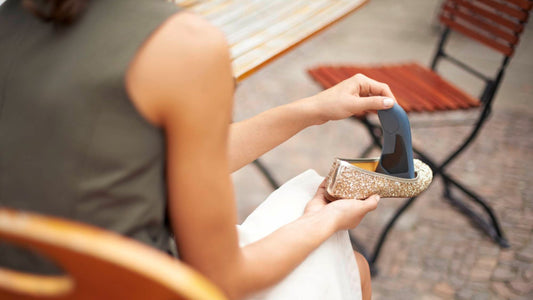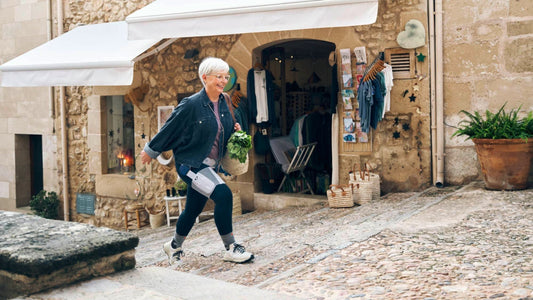The history of ACL management and conventional treatment approaches
Before we understood the ACL, cast immobilisation followed by rehabilitation was the most common approach. Often, such treatments resulted in satisfactory stability but a lack of regular ligament function.
- In the early 1800s, new understandings led to the adoption of surgical repair through direct sutures, though the results were unpredictable.
- In the early 1900s, surgeons began experimental reconstruction with silk grafts and, later, tissue grafts from muscles and tendons.
At the time (and even into the 2000s), it was thought that the ACL had very limited healing capacity and that, therefore, surgery was the only effective option for higher-grade tears. It was also once believed that surgery reduced the risk of post-traumatic OA.
Graft reconstruction surgery is still the most common approach. However, there is debate around emerging research, which may indicate that ~60% of patients may not need it, and there’s little evidence linking conservative ACL treatment modalities with a higher OA risk. The one benefit of reconstruction - as certain studies purport - is that it can facilitate a faster return to sport (marked by better stability at initial follow-ups). Even so, studies demonstrate that similar results may be achieved with conservative therapy and neuromuscular rehabilitation - if a little further down the line.
Statistics on ACL injuries: prevalence, incidence, and healthcare burden, which warrants new approaches.
Incidence rates of ACL injuries are growing increasingly common, especially among younger generations. Following this trend is a rising number of reconstruction surgeries.
Research from 2010 to 2015 shows that the incidence of ACL reconstructions in Australia was the highest in the world and is increasing. At greatest risk are 20–24-year-old men and 15-19-year-old women. However, ACL tears are also rapidly increasing among children between 5 and 14. The data also indicates that the incidence of revision ACL surgeries is rising more quickly than that of initial reconstructive surgery. One study found that in high-performance athletes, more than a quarter of ACL injuries occurred after a previous ACL injury.
Between 2001 and 2020, 160,353 ACLRs were performed in Australia under the MBS. The annual volume of cases increased by 82%, from 5512 in 2001 to a worrying peak of 10,011 in 2017. This increase was seen across all age groups and sexes, with a greater proportion of reconstructions performed on males than females (64% compared to 36%). 2020 saw a slight drop in the growing trend, likely due to the effects of COVID-19.
These trends, combined with emerging research comparing reconstruction to conservative treatment modalities, highlight the need for proper diagnosis, monitoring, and management of the condition.
The history of the Cross Brace Protocol and its role in shaping a new approach to ACL management
The CPB
The Cross Brace Protocol is a novel conservative treatment approach for specific high-grade Anterior Cruciate Ligament tears. The protocol relies on a hinged brace to limit the knee joint’s range of motion over a 6, 8, or 12-week period to allow the ACL fibres to slowly reconnect.
The CBP has three key pillars:
- A patient must be braced when full healing capacity of the ligament is present, determined to be 3-13 days following rupture.
- Bracing aims to facilitate complete structural healing of the torn ACL fibres.
- Rehabilitation alongside bracing aims to restore and preserve the functional capacity of the ligament.
The CBP begins by immobilising a patient's knee at 90 degrees for four weeks, followed by gradual adjustments to the range of motion for the following 2-8 weeks. A comprehensive rehabilitation program alongside the bracing regime maintains functional and neuromuscular stabilisation in the knee to enable a safer return to activity after completing the protocol.
A brief history of the Protocol
1970s: Dr Mervyn Cross reconstructed the ACL in patients with ligament ruptures. Following their surgeries, patients were instructed to lock their knees at 90 degrees as this position placed less stress on the healing ACL. Over time, the 90-degree angle was abandoned in favour of early mobilisation and rehabilitation.
2014: The first patient is braced at 90 degrees for 4 weeks. Dr Mervyn and his son, Dr Tom Cross, were consulting with a 19-year-old netball player who did not want ACL surgery. So, Dr Mervyn Cross suggested the post-surgical method of bracing and immobilising the knee at 90 degrees for 4-weeks. At checkup, the ligament showed signs of healing.
2014-2018: Drs Tom and Mervyn Cross managed four similar cases, and slowly, the Cross Bracing Protocol took form. At this time, the doctors also began outlining diagnoses and MRI imaging results to pinpoint which patients and tear presentations are most likely to experience ACL healing.
2019-2020: Dr Tom Cross studies a further 16 patients and presents early findings at the Sports Medicine Conference in Australia. Dr Stephanie Filbray, author of the KANON Trial, joins the project.
At this stage, Bauerfeind also joins the project, working closely with the researchers to modify the SecuTec Genu Hinged Knee Brace to their outlined parameters by developing custom-made limitation blocks with the Cross Protocol team.
2023: The results of the CBP for 80 patients are published in the British Journal of Sports Medicine. Per the study’s findings, 90% of participants with a fully ruptured ACL showed evidence of ACL healing at the 3-month MRI scan, along with improved knee function, less passive knee laxity, and a higher return to sport rate.
Later that same year, a further 460 patients are enrolled in CBP research.
Going forward, and with promising results and further refinement in diagnosis, the CPB aims to offer a third vector for ACL healing alongside surgery and rehabilitation.
Creating the perfect Cross Bracing Protocol Brace
Bauerfeind has been working with Dr Cross and his team since 2019 to create a brace that fits CPB requirements. The optimal brace needed to be comfortable to wear to encourage patient compliance, include a hinge system with precise lockable intervals to gradually increase range of motion, and be removable without the patient needing to extend their knee, as that would complicate recovery (especially at the initial stages).
Keeping comfort in mind
As we always say, a brace is only effective so long as the patient is willing to wear it. Unfortunately, many patients see rigid braces as bulky and cumbersome, and the notion of wearing one of them for weeks on end can be unnerving—even if it has the potential to help them avoid surgery.
To encourage patient compliance, our technicians designed the SecuTec Genu frame of lightweight aluminium that can anatomically fit a patient's leg, reducing its bulkiness and drastically improving wearability. This frame is further supported by sturdy, adjustable straps that let you optimise the fit and ensure the brace sits firmly in place. Its adjustability also allows you to make room for any inflammation that may be present. As with all our supports, the modified SecuTec comes in diverse sizing options for a firmer and more comfortable fit.
Creating a precise hinge mechanism
In collaboration with Dr Cross and his team, our technicians created a CPB-exclusive set of limitation blocks. These enable extension limitations at 60, 75, and 90 degrees, per the CBP requirements. Combining this custom set with the SecuTec’s standard flexion and extension limitation blocks allows you to achieve the necessary ROM restrictions for seamless progression through each protocol stage.
Meeting the donning and doffing requirements
The SecuTec Genu isn't a step-in brace. The innovative buckle system enables patients to conveniently don and doff the brace by simply clipping and unclipping the buckles, allowing the knee to remain affixed at the required positions. This allowance is particularly crucial in the first 4 weeks of the CBP, where the patient’s knee must stay locked at 90° without movement. Stepping into a standard brace without the ability to simply place the brace on the knee may interrupt healing.
Maintaining healing following the protocol: The use of the GenuTrain, GenuTrain S, and SofTec Genu as solutions to aid the return to sports and preserve healing.
Severe injuries and prolonged recovery can negatively impact muscle strength and neuromuscular control. Therefore, wearing compression braces following the CBP can help assist recovery and prevent re-injury.
Research shows that proprioceptive bracing is beneficial following ACL reconstruction. It helps the patient improve neuromuscular control and makes certain movements (single leg turns, pivot jumps, and single leg drops) easier to perform. Thus, it may also improve recovery following the CBP.
Additionally, the ACL is crucial in stabilising the knee. While it heals, the stabilising effect of the compression knit alongside external supports (like the GenuTrain S’s and SofTec Genu’s anatomic stays and straps) will work to remove excess strain on the ligament and improve stability. Such assistance is especially important as the patient begins rehabilitative exercises and returns to physical activities.
SofTec Genu


